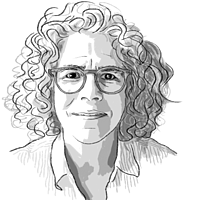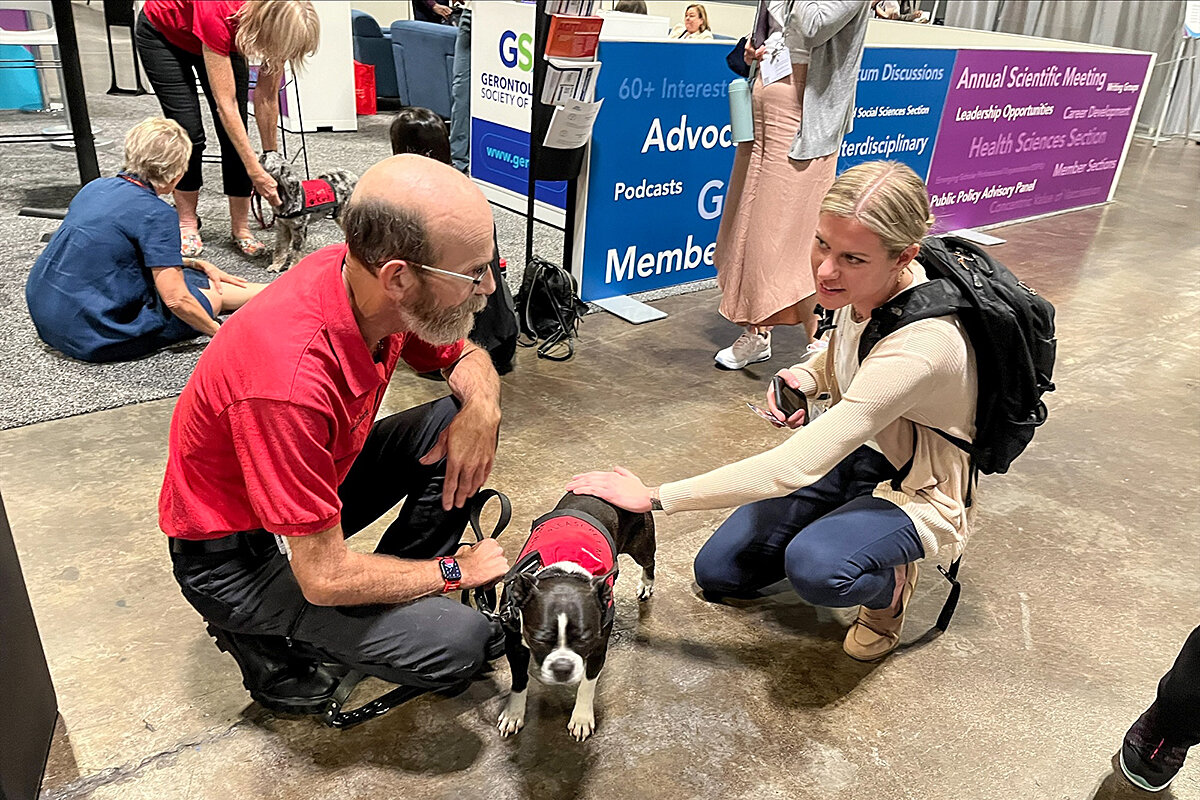Letter from Tampa: Aging gets a makeover at this gerontology summit
Loading...
| Tampa, Fla.
The 76 million Americans in the great baby boom demographic bulge will all be 60 to 79 years old next year. But their powerful influence on the economy, education, culture, politics, and lifestyles is not retiring.
Outlines are emerging of how the now-older generation is expected to meet the experience of aging and reshape our culture. Its immediate predecessors – members of the so-called Greatest Generation (born 1901-1924) and the Silent Generation (born 1925-1945) – are already registering record numbers of centenarians and stretching boomers’ expectations of elderhood.
So what does it mean to be “old”?
Why We Wrote This
A story focused onResearchers are aiming to bust stereotypes and shift perceptions about growing older – in the interest of happier, healthier lives free from discrimination.
That question filled the cavernous Tampa Convention Center with researchers from all over the world last week, with room after room of more than 500 scholarly presentations at the annual meeting of the Gerontological Society of America.
The driving angle of the organization these days is reframing perceptions of aging – liberating it from misconceptions and from discrimination.
The formal scholarly presentations had new takes on care for the caregivers of elders, the effects of war in early life on aging, the double grip of ageism plus race or gender discrimination, aging education starting in grade school, how hearing aids may avert dementia, third-act careers, hoarding as decision-making avoidance, “driving cessation” (aka taking the car keys away from Dad), robot companions, elder tech literacy, and so on.
In other scholarly work, young researchers from all over the world – their studies sometimes too fresh or unformed to have scored spots in formal symposiums – stood in a maze of “poster” slots 400-deep across an exhibition hall. They explained their work on a poster to passing professionals in what amounted to earnest elevator pitches.
Cynthia McDowell stood in front of charts showing her slice of a larger research project on how social singing can reduce the stigma and isolation of people with dementia and their care partners. The University of Victoria Ph.D. student’s work focuses on the care partners. Self-evaluations over two four-month periods of choir participation revealed that “distress” dropped precipitously. She calls it a “quiet intervention” – a nonpharmacological alternative to treating distress. This may sound intuitively obvious, but a study like hers gives the theory evidence that can be built upon to generate other theories, and ultimately programs to help.
Such a meander through the foundations of age-related research – behavioral, sociological, medical, spiritual – is largely not for a consumer but is more of an expert’s candy shop visit. But some of the most important outcomes of this annual gathering come from “nuggets of evidence around different topics,” said Robyn Stone, an aging and long-term care expert in the Clinton administration who is now with the nonprofit LeadingAge. Those nuggets will end up affecting you, the public, in the form of policy, programs, or advice. The goal is to support healthier, happier, longer lives.
The buzz in the conference rooms, flowing partly from recent research, was often about basic reframing:
- Watching out for ageist language that can sow institutional discrimination and self-imposed ageism.
- Understanding that aging is not a disease, but an experience that starts at birth.
- Recognizing the evidence that people over age 65, now a fifth of the American population, are not a burden on society or a drain on scarce resources.
Lacing through almost every discussion on any topic was the constant mental check for ageism. The World Health Organization calls ageism the most widespread form of discrimination in the world, saying it is even more implicit and hence unchallenged than sexism or racism.
“We didn’t really start addressing ageism until five, 10 years ago,” says Tracey Gendron, chair of the Virginia Commonwealth University’s department of gerontology, who spoke to a session of the Gerontological Society’s journalism fellows. “We’re definitely making progress – awareness is on the increase.”
But, adds Dr. Gendron, the author of the recent book “Ageism Unmasked,” “we aren’t born ageist. We’re taught. ... It’s all of these messages that we’ve had – the characters in fairy tales, the very earliest books that we are reading to our children, are really rife with these stereotypes and caricatures.”
Indeed, there was professional preoccupation here with ageism building on the American political scene – with presidential front-runners Joe Biden, turning 81 next Monday, and Donald Trump, 77.
“If Joe Biden or Donald Trump fall, it’s big news. But I think the big news should be, well, what happened after the fall?” said Steven Austad, a biology professor at the University of Alabama in Birmingham and author of “Methuselah’s Zoo: What Nature Can Teach Us About Living Longer, Healthier Lives.” He was referring to President Biden’s fall while cycling last June: “The bike fell. He scraped himself, got up, and he was fine.”
One of Dr. Gendron’s observations about ageism may dog anyone who heard it well past the conference. “Ageism lives within compliments like, ‘You haven’t aged a bit. You look great for your age. ... That haircut makes you look younger.’ It is ageism. And if you answer, ‘Thank you,’” she says, that’s ageism too.
This article was written with the support of a journalism fellowship from the Gerontological Society of America, the Journalists Network on Generations, and the Silver Century Foundation.







